

| There is still much that remains unknown about the function of ancient megalithic monuments found throughout the world. In most cases it is still uncertain who the actual builders were. What we do know, from contemporary observations, is that most of these sites were used for astronomical observation. The dominant theory places their function within agricultural ritual. | 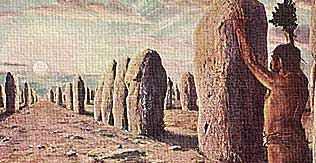 Human observation of the movement of planetary bodies dates far back into prehistory. Above, an artist's speculation of Sun worship at Averbury. |
|
E-mail Newsletter is Distributed Free to all Interested Viewers. Receive Updates about: Subscribe TodayFurther Astrology Resources Theme Introduction Content Directory |
MESOPOTAMIA Astrology's ancient beginnings are also traced to Mesopotamia at least as far back as 2001 BCE. These early records reveal a complex cosmology in which the Sun, the Moon and the planets represented gods who possessed the power to direct and intervene in the course of physical events. BABYLONIA These early concepts progress through the growth of Babylonian civilization. Fundamental to this world view, was the idea that the planets had a divine nature and the ability to influence human destiny. The Babylonians established a pantheon of gods, each possessing dominion over a particular area of human experience. For instance, Mercury, the god of the intellect was seen as quick and cunning, with a special quality of calculating intelligence. Mars was seen as the ruler of violence and war; Jupiter, a kingly figure and sovereign of men; Saturn, quick tempered and cruel. Here we can begin to recognize the basic forms of Astrology as we know it today. As Babylonian Astrology evolved, a correlation was recognized between happenings in the heavens and events on earth. CHALDEA From ancient Babylonia, we follow Astrology to the fascinating, yet mysterious, Chaldeans. These Mesopotamian people are famed in history as magicians and sages. Two most noted figures were Belshazzar and Nebuchadnezzar. They reigned for nearly 100 years during the seventh century BCE. The Chaldeans were keen observers and mathematicians. They recognized that the events in the sky followed a pattern. They watched the stars move in fixed order across the heavens and the planets wandering in eccentric orbits, though in much the same plane. It was apparent to them that although the planets had their own individual movement they behaved in coherent cycles. It is here in Chaldea, that the charting patterns of the planets began. The very first Ephemeridae, tables of planetary motion, were constructed during the reign of King Assurbanipal. In preparation of the new cosmological system, the Chaldeans made use of the twelve main constellations through which the Sun and Moon regularly pass. These were the precursors of the zodiac. |
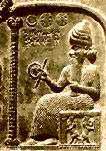 Babylonian Astrologer pre-2002 BCE  Chaldean Skywatcher 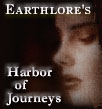
|
|
 Mars Masculine principle in a horoscope, ruling the signs Aries & Scorpio.
"Astrology interested us, for it
tied man to the system. Instead of an isolated beggar, the farthest
star felt him, and he felt the star. However rash and however falsified
by pretenders and traders in it, the hint was true and divine, the
soul’s avowal of its large relations, and, that climate, century,
remote natures, as well as near, are part of its biography." |
ANCIENT EUROPE The great importance attached to the movements of the Sun, Moon, planets and stars was not limited to Asia and the Mediterranean basin. Throughout the world are found systems of Astrological study. In Western Europe this is attested to by the many megalithic sites spread across the continent, and in Britain. It has been documented that one of the principal functions of these sites was to compute the yearly movements of celestial bodies. The monument at Stonehenge in England is perhaps, the most impressive of these sites. It possesses a sophisticated method of calculating a calendar with great accuracy. The positioning of its stones pinpoints the solstices and predicts eclipses. The layout of this stone circle was submitted to computer analysis, and a wide range of alignments were found showing this monument to be a gigantic megalithic computer. Radio carbon dates estimate that it was constructed about 2500 BCE. It is, indeed, a outstanding and baffling achievement for this Bronze age civilization. Equally impressive, in its astronomical exactness, is the stone work of Newgrange in Ireland. Thought for a long time to be merely a large passage tomb, this 5,000 year old structure is in fact an observatory which the ancient Irish used to mark the solstice point of winter. Just before 9am on each December 21, the shortest day of the year, the morning sun enters a small 8 inch portal and ignites the interior of this impressive mound. Evidence that these earlier people were not only skilled architects, but learned astronomers as well. EGYPT The Egyptian Pyramids remain singularly impressive to this day among all ancient astronomical buildings. They are aligned to the North Pole and the cardinal points. They were set so accurately, that a 1/12 degree deviation was discovered and accounted for by scientists as Africa's participation in the 'continental drift', rather than an error in Egyptian engineering. The pyramids served a dual purpose; burial place of the pharaohs, and astrological calculators. There are sloping corridors leading from the faces into the interior. These were used as sighting tubes, allowing Egyptian astrologers to make naked-eye observations of great accuracy from which astrological calculations were progressed. GREECE Important to the foundation of Greek Astrology, was a Babylonian, named Berosus, who lived about 250 BCE. His writings had a great influence on early astrological concepts in Greece. Unfortunately, no manuscripts of his work have survived. Bersosus established a school of Astrologers on the Island of Cos. During the next 400 years, the Greeks zealously converted Chaldean Astrology to their own traditions. Here, it became formal and complicated. The Greek tradition is credited with developing a system of diagnosis; and a method of calculating individual destinies based upon the moment of birth. The Greeks also associated myths with the star groups. The heavens became an array of sacred objects, monsters, animals and heroes. They added human qualities to the heavens in constellation figures which embodied arrogance, love, fear, strength, compassion, vanity and tenderness. Alongside this mythologic view, another based on geometrical and mathematical relationships was seeded in Greece. Science began when the Greeks applied mathematics to the study of the heavens. PTOLEMY'S UNIVERSE By about the third century BCE, Aristarchus calculated the distances to the Sun and Moon. His calculation for the Moon proved correct, but he was way off on the Sun. Still impressive, as he did this measuring without the availability of Instruments. Such tools were finally invented by Hipparchus. His instruments were so accurate that by 150 BCE he determined the length of the year to within six minutes. Three centuries later Ptolemy relied almost entirely on Hipparchus' data as the basis of his world system. Ptolemy constructed a model of the universe that could explain the retrograde movements of the planets as well as the variations in their speed and brightness. The Ptolemaic model of the universe dominated Western thought for over 1400 years. The first textbook of Astrology, The Tetrabiblos, was written by Ptolemy. In 1543, it was Copernicus who put the sun at the center of the universe. This was the same premise that had been held by Aristarchus in the middle of the third century. Old ways die hard, and the Copernicus system was not accepted for another 100 years. It was the work of both Kepler and Newton that dealt the death blow to the Ptolemaic system. Kepler found that the planets actually move in ellipses, not circles, and Newton explained why. Kepler believed only those people who had never studied astrology could possibly deny it. In 1687, Issaac Newton's book 'Principia Mathematica' opened the door to the modern era of studying the heavens, called astronomy. This was the beginning of the decline astrology would suffer until the mid-19th century. Historic Overview Two: Modern Astrology Coming soon! - Request an Invitation! |
 Stonehenge Salisbury, England. Stoic evidence of Bronze age Astronomy.  Venus Feminine principle in a horoscope, ruling the signs Taurus & Libra.  The pyramids of Giza, Egypt, structured with astronomical correspondence. 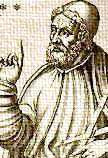 Ptolemy
Ptolemyof Greece Constructed a new model of the universe.
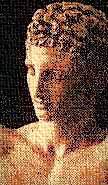 Mercury of Greek Myth. The heavens embodied within human forms. |

| Development & Production Credits |
| Theme
Editor - Louise Ogden —
Primary Text - Laura
Laurance Art Direction : Thierry Alberto — Art Research : Malcolm Hurrell Structural Design : Mark Nelson — Research Assistant : Walter McCrae Support Production : Henry Craig, Joan Flandrin, Elisa Ryan |
| Learn
more about the Earthlore story, upcoming web features and future cultural
projects. Ask to receive your free newsletter Your questions or comments are always welcome! Astrology Queries |
 |